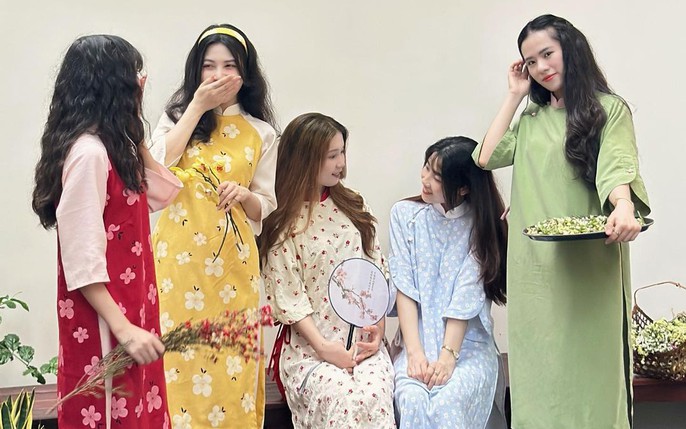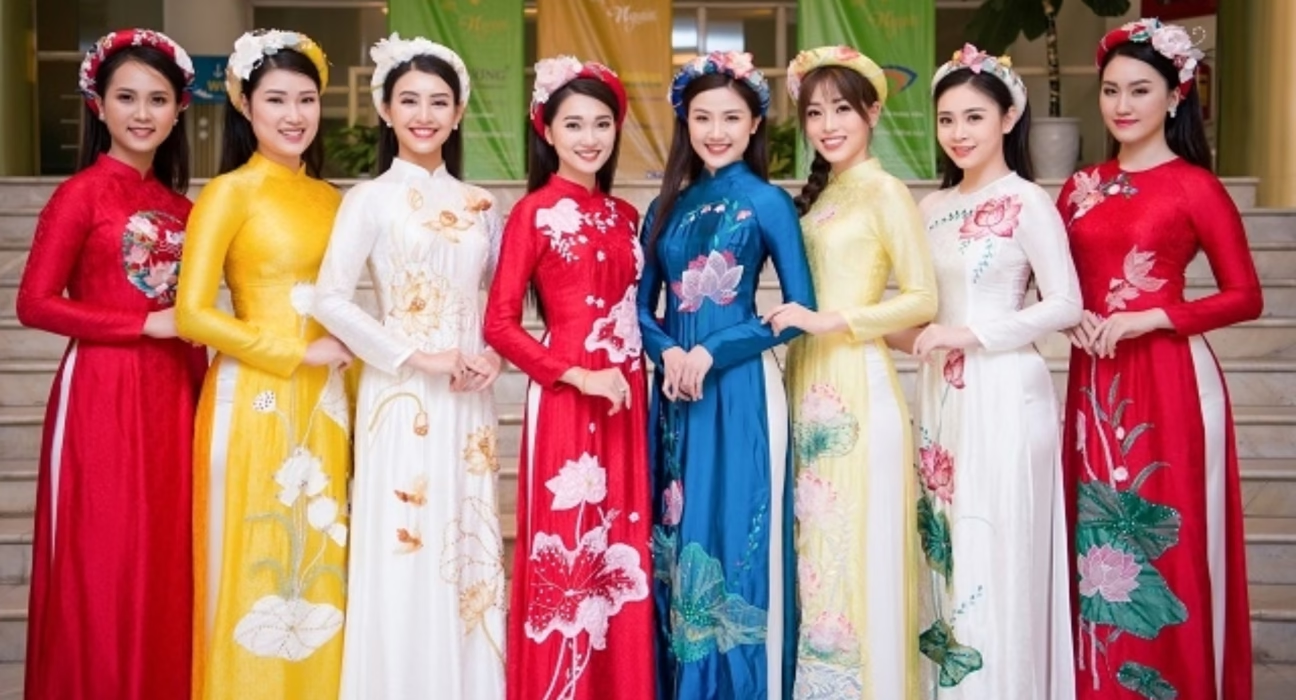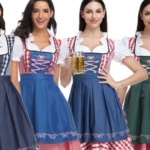Ao Dai (Vietnam) is not just a traditional garment; it captures the essence of Vietnamese identity, culture, and beauty. This elegant attire is a symbol of pride that has been passed down through generations, embodying the spirit and traditions of Vietnam.
In examining the Ao Dai, we can discover much more than a mere outfit. This exquisite piece of clothing tells stories that reflect the history and values of a nation, connecting the past to the present while adapting to contemporary society.
The History and Evolution of Ao Dai
The Ao Dai has a rich and varied history that dates back centuries, evolving in form and significance as it transitions through various cultural influences. Understanding this evolution offers an insight into the enduring nature of Vietnamese heritage.
Origins of Ao Dai
The roots of the Ao Dai can be traced back to the early 18th century when it was first introduced as a two-piece outfit. Originally, it featured a long tunic paired with loose-fitting trousers. This initial design reflected an adaptation of Chinese clothing influences, uniquely tailored to suit Vietnamese cultural and practical needs.
In the 20th century, under French colonial influence, the Ao Dai underwent further transformation, becoming more form-fitting and emphasizing the feminine silhouette, enhancing its elegance while still respecting cultural modesty.
Cultural Significance Through the Ages
Throughout its history, the Ao Dai has served as an important cultural symbol. It has appeared in various forms of Vietnamese art, literature, and media, reinforcing its place within the national identity. The garment often signifies significant occasions such as weddings, festivals, and holidays, making it integral to Vietnamese traditions.
Moreover, the Ao Dai transcends merely being a fashion statement; it represents resilience against foreign influences and celebrates the unique characteristics of Vietnamese culture. Wearing the Ao Dai is akin to wearing a piece of history, allowing individuals to connect with their heritage.
Modern Interpretations and Styles
Today, the Ao Dai exhibits a multitude of interpretations, thanks to innovative designers who blend traditional techniques with modern aesthetics. New fabrics, patterns, and designs have emerged, appealing to younger generations and ensuring the Ao Dai remains relevant.
This ongoing evolution captures the dynamic nature of Vietnamese culture, allowing for creative expression while maintaining the historical and cultural significance of the Ao Dai. Events like fashion shows and cultural festivals showcase these modern adaptations, proving that the Ao Dai is both timeless and contemporary.
The Art and Craftsmanship Behind Ao Dai
Creating an Ao Dai is an art form that requires skill and passion. Tailoring this beautiful garment involves intricate craftsmanship, reflecting the dedication and expertise of the artisans involved.
The Fabric and Material Selection

One of the defining aspects of the Ao Dai is the choice of fabric. Traditionally, silks and cottons were preferred due to their lightness and breathability, suitable for Vietnam’s tropical climate. The soft texture of silk enhances the flowing lines of the Ao Dai, rendering an ethereal quality to the wearer.
Additionally, artisans have begun exploring diverse materials such as lace, chiffon, and even embroidered fabrics, broadening the Ao Dai’s aesthetic appeal. Each material contributes to a different visual and sensory experience, enabling wearers to express their individuality.
Tailoring Techniques
Tailoring an Ao Dai is a meticulous process that demands precision and attention to detail. Skilled tailors employ a range of methods to create the perfect fit, taking into account each individual’s body shape and proportions.
The distinctive high neckline and side slits are carefully crafted to ensure ease of movement while exuding elegance. The harmonious balance between comfort and sophistication makes the Ao Dai a beloved choice among women of all ages.
The Role of Color and Patterns
Color plays a vital role in the aesthetics of the Ao Dai, with traditional colors symbolizing various meanings. For instance, red is associated with luck and happiness, making it popular for weddings, while white symbolizes purity and is often worn as school uniforms.
Patterns ranging from floral motifs to geometric designs also add layers of symbolism to the garment. These elements allow wearers to convey personal narratives or cultural affiliations, transforming the Ao Dai into a canvas of expression.
Ao Dai in Contemporary Society
As Vietnam continues to develop, the Ao Dai remains a significant presence in both everyday life and special occasions. Its adaptability speaks to its relevance in a rapidly changing world.
Ao Dai in Daily Life

While once primarily reserved for formal events, the Ao Dai has found its way into everyday wardrobes. Many young women proudly don Ao Dai for school uniforms or casual outings, showcasing their cultural pride while embracing modern lifestyles.
This integration highlights how the Ao Dai can coexist with global fashion trends. Young designers are experimenting with cuts, colors, and styles, breathing new life into this classic attire and making it accessible to the modern woman.
The Impact of Globalization
In an increasingly globalized world, the Ao Dai has garnered international attention. Fashion shows and exhibitions featuring the Ao Dai have attracted audiences worldwide, sparking interest in Vietnamese culture beyond its borders.
Moreover, e-commerce platforms have made it easier for non-Vietnamese consumers to purchase Ao Dai, fostering cultural appreciation and understanding. With the rise of social media, influencers and fashion bloggers promote the Ao Dai, helping it reach diverse audiences.
Challenges Facing Ao Dai in Modern Times
Despite its popularity, the Ao Dai faces challenges in maintaining its cultural significance amidst modernization. The fast-paced lifestyle of urban living often prioritizes convenience over tradition, leading some to overlook the importance of the Ao Dai.
To address this issue, cultural organizations and educational institutions are advocating for the preservation of the Ao Dai through workshops, fashion shows, and community initiatives. By engaging younger generations, they hope to instill a sense of pride in their cultural heritage.
Ao Dai as a Symbol of Cultural Exchange
The Ao Dai serves not only as a representation of Vietnamese identity but also as a bridge for cultural exchange. Its presence in international contexts facilitates meaningful interactions between cultures.
Ao Dai in International Fashion Shows

The participation of the Ao Dai in international fashion shows has allowed it to take center stage on a global platform. Designers have showcased their innovative takes on the traditional garment, capturing the imagination of international audiences.
These events play a crucial role in promoting Vietnamese culture and fashion while fostering cross-cultural dialogue. As the Ao Dai garners recognition, it encourages others to explore and celebrate their own cultural practices.
Cultural Festivals and Exchanges
Cultural festivals celebrating the Ao Dai attract tourists and locals alike, creating opportunities for cultural exchange. Participants engage in activities such as traditional dance performances, culinary experiences, and workshops on crafting the Ao Dai.
Such events not only highlight the beauty of the Ao Dai but also provide a deeper understanding of Vietnamese customs, strengthening bonds between diverse communities. This shared experience fosters appreciation and respect for cultural differences.
Embracing Diversity Through Ao Dai
The beauty of the Ao Dai lies in its ability to embrace diversity. Designers are creating multicultural adaptations of the garment, blending elements from various cultures into the Ao Dai’s design.
This openness promotes inclusivity, allowing people from different backgrounds to connect through a shared appreciation of fashion and culture. As a result, the Ao Dai stands as a testament to the power of creativity and collaboration in fostering understanding between cultures.
Conclusion

The Ao Dai is more than just a traditional dress; it embodies the elegance, history, and cultural richness of Vietnam. As it evolves with time, the Ao Dai continues to inspire both locals and foreigners alike, serving as a powerful reminder of the importance of cultural heritage.
With ongoing efforts to preserve and promote the Ao Dai, there is hope that future generations will appreciate its significance. Ultimately, the Ao Dai represents a convergence of past and present, tradition and modernity, forging a path that honors the beauty of Vietnamese culture while embracing the possibilities of the future.








